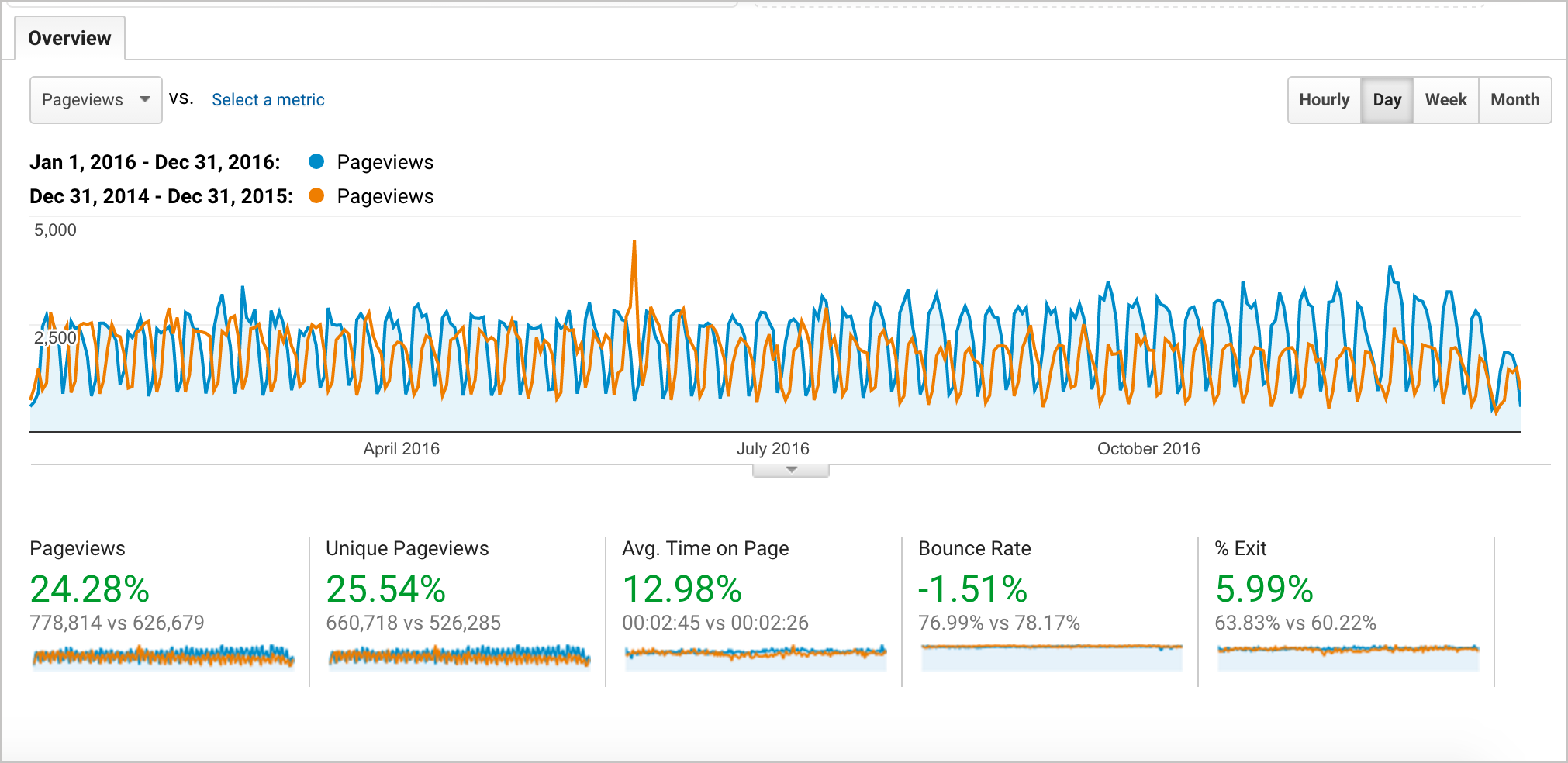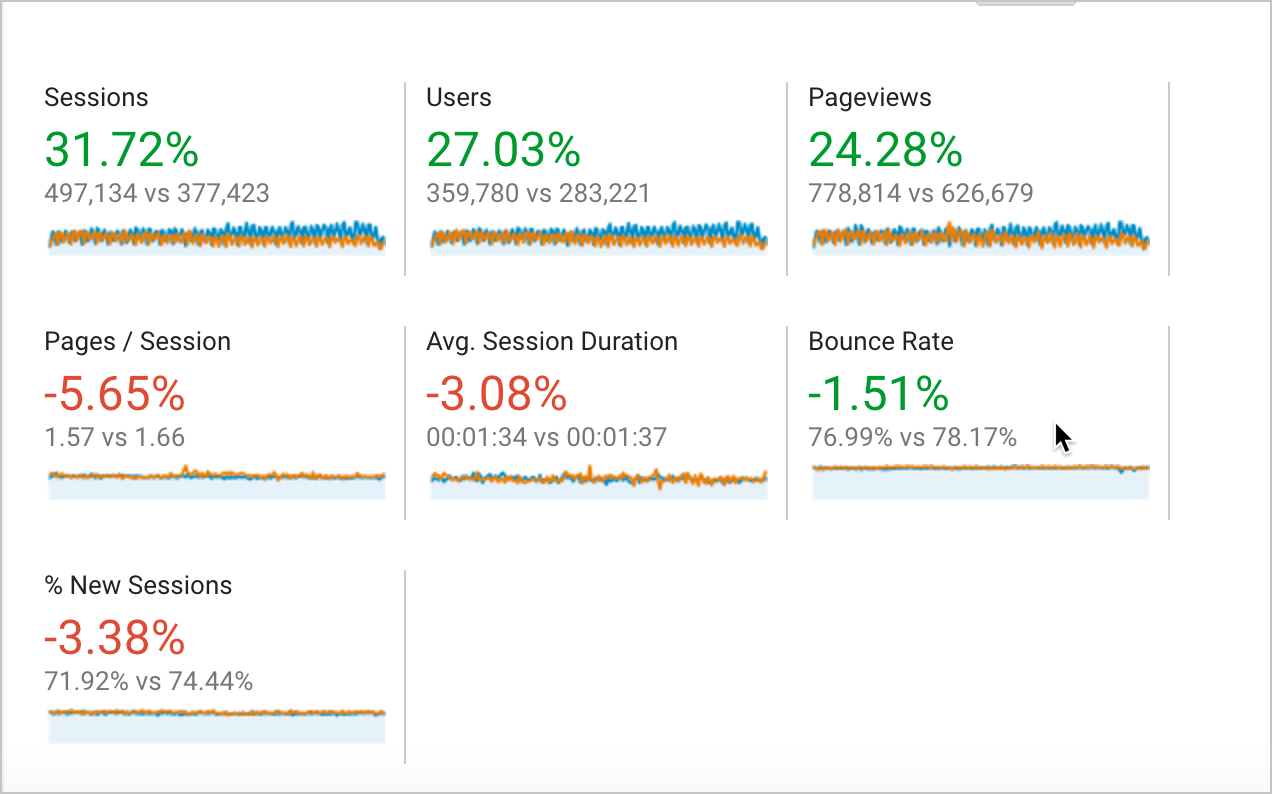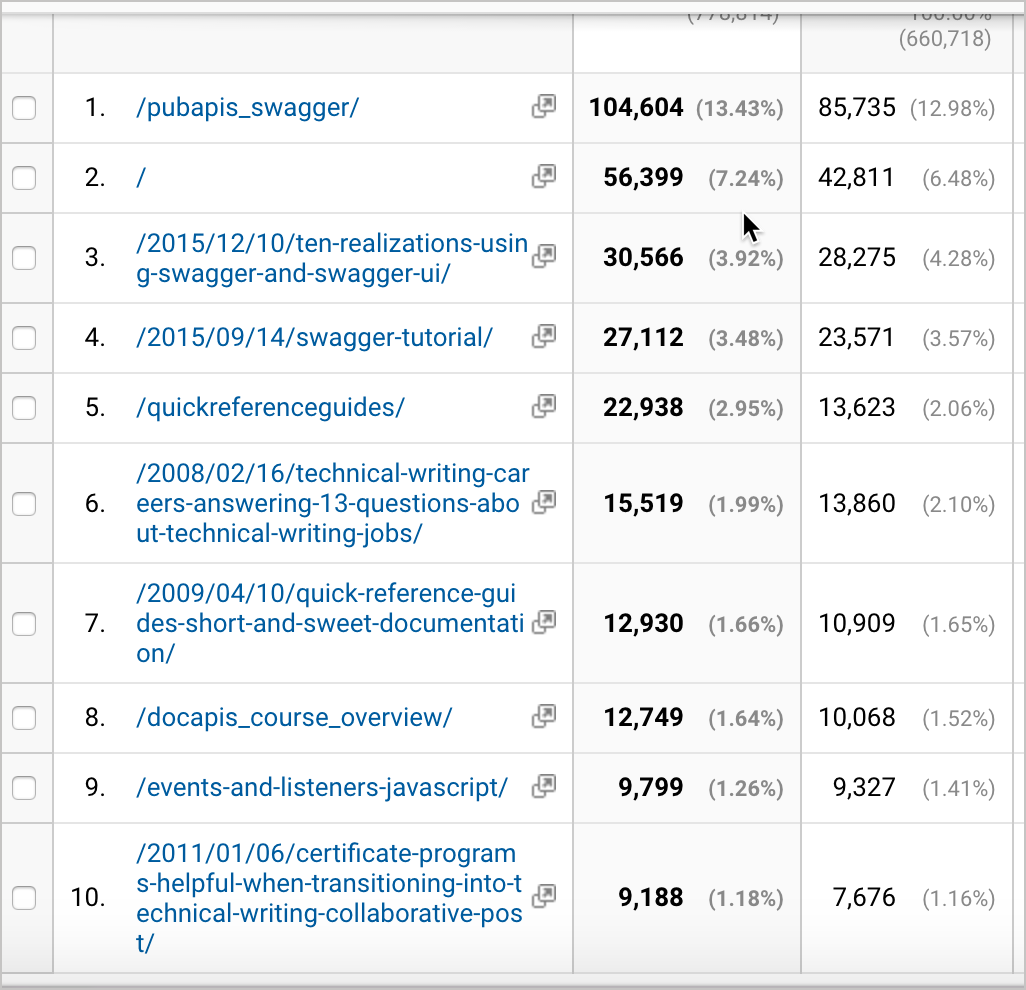My top 3 posts of 2016 are all Swagger-related -- lessons learned from 2016 analytics
- Page views and session metrics
- Top pages
- Reasons for increase in traffic
- The larger trend is documentation
Page views and session metrics
Here are a couple of screenshots from Google Analytics:


Top pages
What pages were users visiting? Here are the top 10:

Here are links to pages listed in the above screenshot:
- Swagger tutorial
- 10 realizations as I was creating my Swagger spec and Swagger UI
- Swagger tutorial link
- Quick reference guides
- Technical Writing Careers – Answering 13 Questions about Technical Writing Jobs
- Quick reference guides: Short and sweet documentation
- Documenting REST APIs
- Javascript Event Listeners
- Are Certificate Programs Helpful for Transitioning into Technical Writing?
Reasons for increase in traffic
Some of the top pages can be explained away as flukes. I doubt people are searching for “quick reference guides” and trying to learn how to create these formats for documentation. They’re probably looking for a quick reference guide for their device and are just typing in “quick reference guide” generally into Google.
Posts about technical writing careers and certificate programs are perennial favorites. A lot of users (hello English majors!) are looking for tech writing information online and searching for career advice.
The JavaScript article is one of those weird instances where a single post shoots to the top based on unpredictable factors (the melting ice caps?).
But the BIG NEWS is that the top 3 posts are all related to Swagger. In fact, that Swagger tutorial is driving a steady stream of visitors to my site. That article brought 104,000 page views in 2016, which is more views than my homepage (the “/”) gets.
If you search for “Swagger tutorial,” my page is in the top 3 results. I find this odd, because it’s not even a very good tutorial.
This tells me several things:
- The documentation for Swagger is really bad, so people are looking elsewhere for information.
- Swagger is a hot trend that people are hungry for information about.
- I should probably fine tune the heck out of that page.
- People searching on the web often include “tutorial” in what they’re searching for, especially when the official docs are confusing.
The larger trend is documentation
Finally, let’s look at a fundamental trend about all of my top posts. Are they clever examples of storytelling? Are they personal narratives? Are they comedic monologues? Videos? Existential laments? Political rants? Probing interviews? Nope. They are all documentation.
Yes, the top posts on my site are all information-rich posts offering tutorials, instruction, or other guidance. This is what people search for on the web. It’s exactly the kind of content we produce on a daily basis as technical writers. We’re fueling the web with information people want.
About Tom Johnson

I'm an API technical writer based in the Seattle area. On this blog, I write about topics related to technical writing and communication — such as software documentation, API documentation, AI, information architecture, content strategy, writing processes, plain language, tech comm careers, and more. Check out my API documentation course if you're looking for more info about documenting APIs. Or see my posts on AI and AI course section for more on the latest in AI and tech comm.
If you're a technical writer and want to keep on top of the latest trends in the tech comm, be sure to subscribe to email updates below. You can also learn more about me or contact me. Finally, note that the opinions I express on my blog are my own points of view, not that of my employer.
